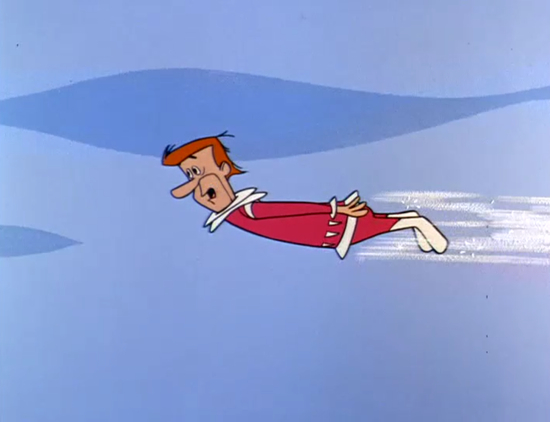Introduction
If you think cartoons are just for kids, think again. Cartoons from the 1960s, 70s, and 80s were brimming with imaginative takes on future technology—and more than a few of those then seemed laughably far-fetched. But fast-forward to the present, and many of the once-whimsical ideas from shows like The Jetsons or other retro sci-fi cartoons are part of the present reality. In this quick conversation from Innovation Café, I explore why it’s worth revisiting these classic cartoons (and other playful sources) for inspiration. You might just discover that yesterday’s “outlandish fantasy” is tomorrow’s next big breakthrough. After all, the difference between an inventor and a science fiction writer is that an inventor is good at predicting what the world will look like in the near term — over the next 20 years. A science fiction writer predicts what the world will look like in the long term.
Why Old Cartoons?
When scriptwriters back in the mid-20th century envisioned spaceships, jetpacks, and robot housekeepers, they were articulating dreams of what modern life could look like—long before microchips shrank down or artificial intelligence became more than a novelty. Now that technology has advanced, those same “fantastic” ideas might not be so impossible.
- Forward-Thinking Simplicity: Classic cartoons distilled futuristic concepts into simple, iconic gadgets (like moving sidewalks or home-cleaning robots), giving us clear starting points for real-world prototyping.
- Nostalgic Appeal: Many of us grew up with these cartoons, so there’s a built-in emotional resonance that can motivate inventors to tackle these old “dream inventions” in new ways.
A Prime Example: The Jetsons
Take a show like The Jetsons, which envisioned a future brimming with flying cars, automated kitchens, and video calls—once a wild notion. Today, video calling is so commonplace we barely give it a second thought. That’s proof that an inventive leap can migrate from animated fantasy to everyday convenience.
Could the show’s famous “robot maid” be the next frontier? We already have vacuums that run themselves (think Roomba), but we’re not that far off from more advanced home assistants that can tackle tasks beyond just cleaning floors.

Look Beyond Cartoons: Other Sci-Fi Sources
While old cartoons are a goldmine of whimsical possibilities, they’re not the only treasure trove for future tech concepts. Science fiction books, retro-futuristic art, and out-of-print design magazines also house ideas that were once relegated to the realm of imagination. With modern computing power, robotics, and AI, many of these visions could be ripe for building and inventing the innovation expressed (but not, for patent purposes, enabled) in the cartoons.
What Makes These Past Inspirations So Valuable?
- Constraint-Free Thinking: Cartoonists and sci-fi authors face no real-world limitations; they set their imaginations loose. Their unconstrained creativity often led to “impossible” concepts, some of which weren’t really impossible, but merely awaited the creation of the required building blocks.
- Universal Human Needs: Even the wildest cartoon inventions aimed to solve very human problems: saving time, reducing chores, improving communication, or just having fun. These needs haven’t changed, which means those imaginative designs still resonate.
- Low “Imposter Syndrome” Factor: Revisiting older works can help an inventor realize, “Hey, that was just somebody’s creative guess. Maybe I can enable and build a version of it now.”
Sci-Fi: An Invitation to Inspiration
So what’s the practical takeaway?
- Rewatch or browse classic cartoons or sci-fi media. Note the inventions or gadgets that pop up.
- Ask: “Are the building blocks needed to enable this available yet?” Or in the alternative, “can I create those building blocks”?
- Brainstorm how modern tools—3D printing, robotics, computing, sensor tech—could transform that once make-believe device into a workable product. But beware -> if you ask AI “The holographic simulation in Star Trek’s holodeck would be a great invention. Please provide detailed instructions, using all of the creativity you can muster, to build the closest thing current technology (and technology expected in the next 5 to 10 years) to the Holodeck that you can.” If an AI creates the invention, it isn’t likely to be patentable (but we can’t predict how patent law will change over that time frame).
Example:
- A personal flight pack (common in comic books or cartoons): We don’t have a perfect jetpack for the masses just yet, but advanced drone technology and lightweight materials might be the foundation to bring such concepts closer to real feasibility.
Conclusion
Inspiration can come from surprising places—even decades-old cartoons. If you let yourself dream like those early screenwriters did, you may discover that today’s tech can help turn their zany predictions into fully functional realities. Embrace those seemingly “outdated” visions. After all, many modern marvels—like smartphones or self-driving cars—were once purely the stuff of animated fantasies.
As always, Innovation Café invites you to keep your eyes open for sparks of invention in unexpected places. Whether it’s a scene in a retro cartoon or a sci-fi short story, you never know where you’ll find the seed of your next big invention.
